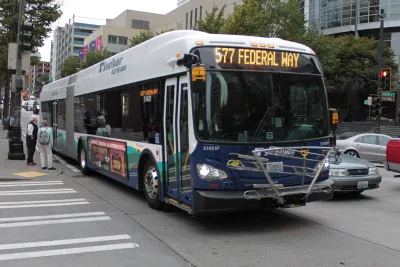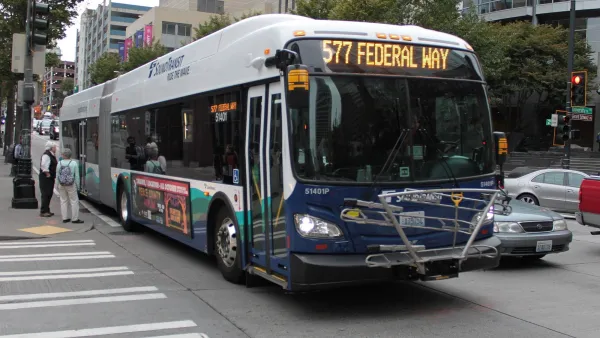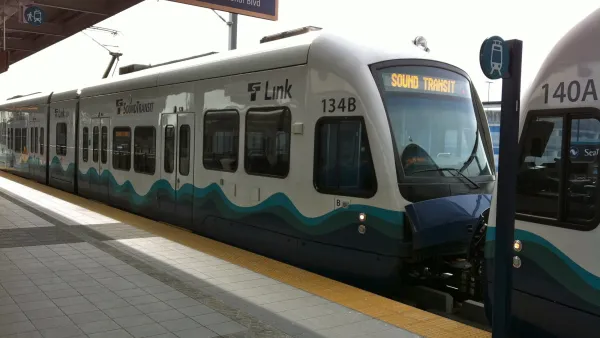The Seattle Transportation Benefit District has led to a growth in ridership and improved access to frequent service, according to a third-year performance report.

Stephen Fesler looks at outcomes of the Seattle Transportation Benefit District as it finishes up its third year. Funding for the STBD came from a 2014 measure approved by voters to expand transit services through a $60 vehicle license fee and a 0.1 percent sales tax increase. The STBD has provided a good return on investment, with $0.91 for every dollar going directly to improving transit services and access.
Since 2015, transit ridership has increased in Seattle on all modes, and much of this growth has happened on regional partnership bus routes. Access also improved between 2015 and 2018. In 2018, over two-thirds of households were within a 10-minute walk of transit service with a frequency of at least 10 minutes, up from a quarter of households in 2015.
In addition, notes Fesler, on-time performance of buses in Seattle improved, the ORCA Youth Card program grew, and more bus routes were added to a service to hiking trailheads.
Funding for the STBD will end next year without reauthorization. In addition to the annual spending on service and access improvements, the Seattle Department of Transportation can spend an additional $10 million on capital projects through the end of 2020. "These investments could include transit-only lanes, queue jumps, transit signal priority, and other strategies to improve speed and reliability," says Fesler.
FULL STORY: Looking Back on Three Years of Transit Investment in Seattle

Analysis: Cybertruck Fatality Rate Far Exceeds That of Ford Pinto
The Tesla Cybertruck was recalled seven times last year.

National Parks Layoffs Will Cause Communities to Lose Billions
Thousands of essential park workers were laid off this week, just before the busy spring break season.

Retro-silient?: America’s First “Eco-burb,” The Woodlands Turns 50
A master-planned community north of Houston offers lessons on green infrastructure and resilient design, but falls short of its founder’s lofty affordability and walkability goals.

Test News Post 1
This is a summary

Analysis: Cybertruck Fatality Rate Far Exceeds That of Ford Pinto
The Tesla Cybertruck was recalled seven times last year.

Test News Headline 46
Test for the image on the front page.
Urban Design for Planners 1: Software Tools
This six-course series explores essential urban design concepts using open source software and equips planners with the tools they need to participate fully in the urban design process.
Planning for Universal Design
Learn the tools for implementing Universal Design in planning regulations.
EMC Planning Group, Inc.
Planetizen
Planetizen
Mpact (formerly Rail~Volution)
Great Falls Development Authority, Inc.
HUDs Office of Policy Development and Research
NYU Wagner Graduate School of Public Service



























!["I [heart] Philadelphia" sign in front of fountain with city hall building in background](/files/styles/small_400/public/images/AdobeStock_514479381_Editorial_Use_Only.jpeg.webp?itok=3o9OsQs9)
